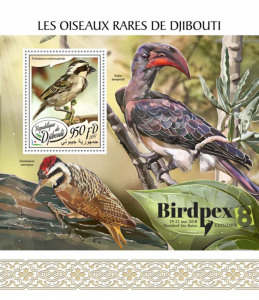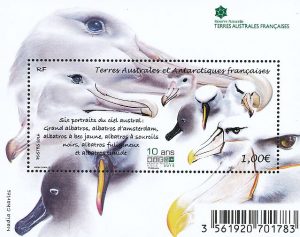Written by a former member of the Society
Introduction

This article is a taster for a series based on recent stamps produced by Stamperija for African and other countries. Some readers may regard these issues as purely aimed at the philatelic market and as such, do not meet their collecting criteria, in that they are unlikely to see usage in the postal system. I may have set out with that mindset but have since become a bit of a fan of these issues.
We look at a set (five stamps) from Djibouti issued by Stamperija in 2017. Back then, you probably would not have been able to buy these stamps in a local post office in Djibouti. That said, these five stamps are official issues authorised by the postal administration in Djibouti. In my view, the set constitutes a valid stamp issue from that country.




